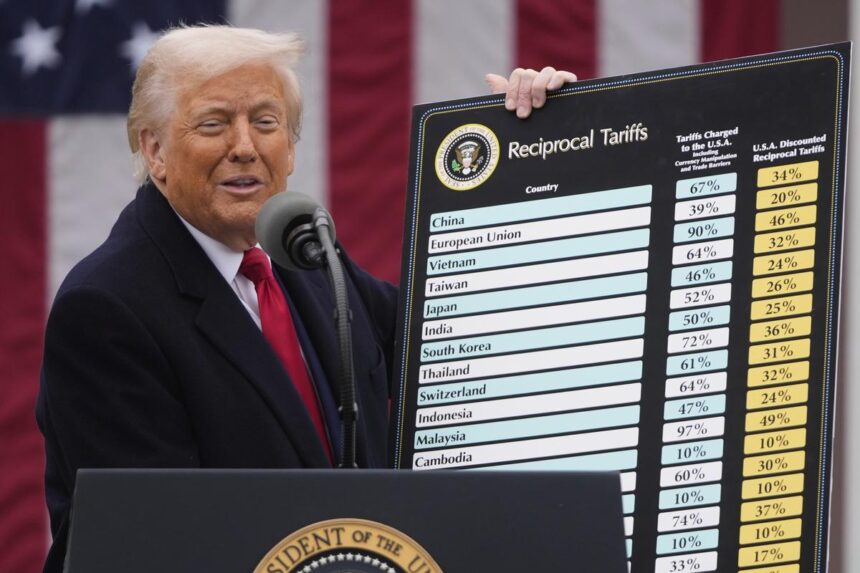In the face of rising tariffs, many U.S. businesses are turning to a long-standing but often overlooked trade strategy: the first sale rule. This customs rule, in place since 1988, allows importers to calculate duties based on the original sale price of a product rather than the final selling price. With recent tariff hikes, the rule is seeing a major comeback as companies look for ways to stay competitive.
First Sale Rule: What Is It?
The first sale rule applies when goods are sold multiple times before reaching the U.S. market. For example, a Chinese manufacturer may sell a product to a Hong Kong trader for $5. That trader then sells it to a U.S. retailer for $10. Normally, import duties would be based on the $10 price. But under the first sale rule, the duty can instead be applied to the $5 price—cutting tariff costs by half.
Brian Gleicher, a senior lawyer at Miller & Chevalier Chartered, explains, “The rule lets businesses use the price from the original manufacturer to determine the final customs duty, which can significantly reduce costs.”
Why the First Sale Rule Is Gaining Attention Again
Although the rule has existed for decades, it became especially relevant during the 2018 tariff increases under former President Donald Trump. Now, with new tariffs on the horizon, businesses are once again exploring this cost-saving approach.
Sid Paruthi, a partner at consulting firm Moss Adams, shared, “When the last administration imposed 25% tariffs on China, we started getting inquiries about the first sale rule. With new tariffs being discussed, interest is rising again.”
Requirements for Using the First Sale Rule
To use the first sale rule, companies must meet specific conditions:
- There must be at least two separate sales: one from the original producer and one or more from intermediaries.
- Each sale must be made at arm’s length, meaning the parties are independent and not related.
- There must be proof that the goods were intended for the U.S. market from the beginning.
- Documentation must show the original sale price.
This can be challenging. Vendors don’t always want to disclose their pricing, making documentation difficult for importers. “Importers need access to the original pricing data, which vendors may be reluctant to share,” says Gleicher.
Why Trust Matters in the First Sale Rule
Because the rule relies on detailed pricing history and transparent communication, trust between manufacturers, vendors, and importers is key.
Rich Taylor, a business consultant based in Ningbo, China, who advises Fortune 500 companies on using the first sale rule, emphasizes the need for cooperation: “There must be a level of trust among all parties because you’re dealing with sensitive cost data.”
Despite the effort involved, the potential savings can make it worthwhile. “You’re keeping your customer happy and helping them lower costs,” Taylor adds. “If you’re not using it, you might lose your edge to competitors who are.”
First Sale Rule in Action: Real Business Examples
Several companies have publicly acknowledged the benefits of the first sale rule:
- Moncler, the Italian luxury fashion brand, told investors that using the rule provides a “significant benefit” by applying duties on its lower industrial cost.
- Kuros Biosciences, a Swiss biotech firm, recently restructured operations to qualify for the rule.
- Traeger (a U.S. BBQ maker) and Fictiv (a manufacturing platform) also referenced the first sale rule during recent earnings calls as a strategy to reduce supply chain and tariff-related costs.
Could This Undermine Tariff Policy?
While legal, the use of the first sale rule could reduce the effectiveness of tariff measures intended to drive manufacturing back to the U.S. Customs authorities and the White House have not commented publicly on its increased use, and no official statistics are currently available.
The first sale rule is becoming a valuable tool for importers looking to manage costs in a high-tariff environment. With proper documentation, independent sales, and trust among trading partners, businesses can legally reduce the duty burden and stay competitive in global markets.
If your business imports goods, especially high-value consumer or luxury items, it may be time to revisit this decades-old trade strategy. For more news, follow 10X Times News.






